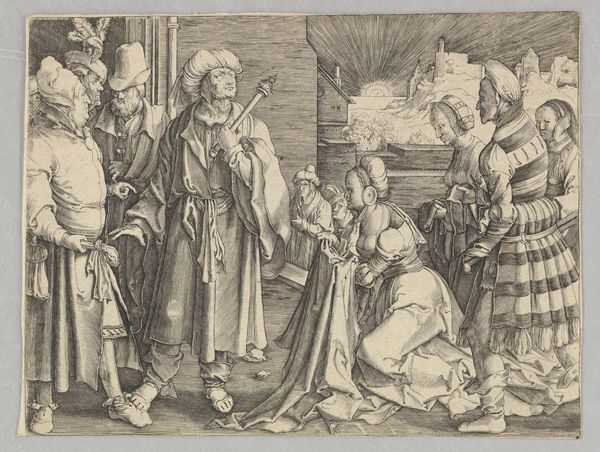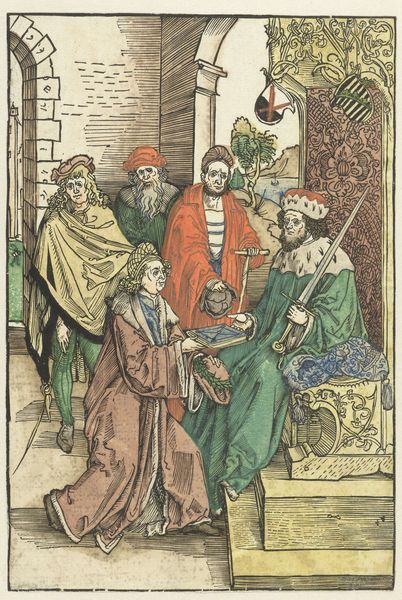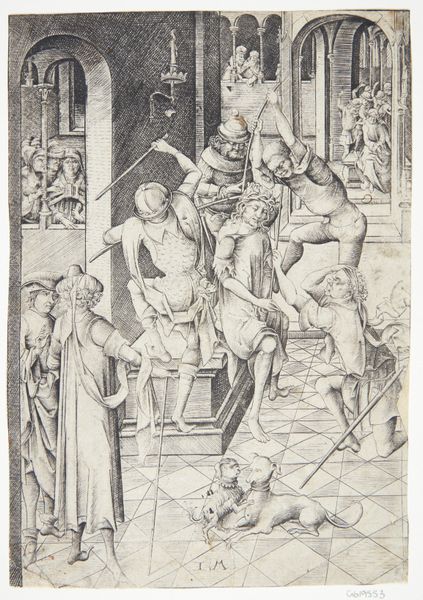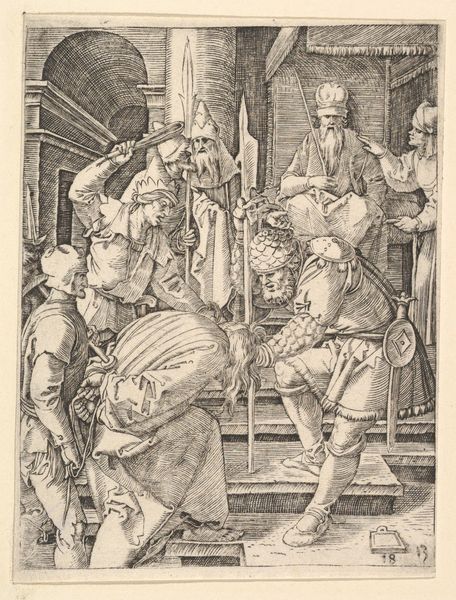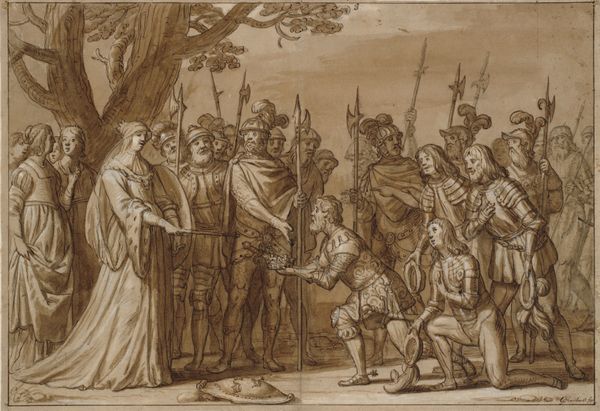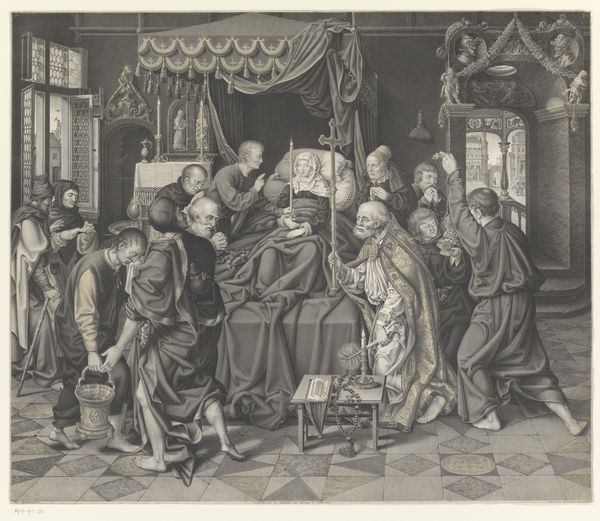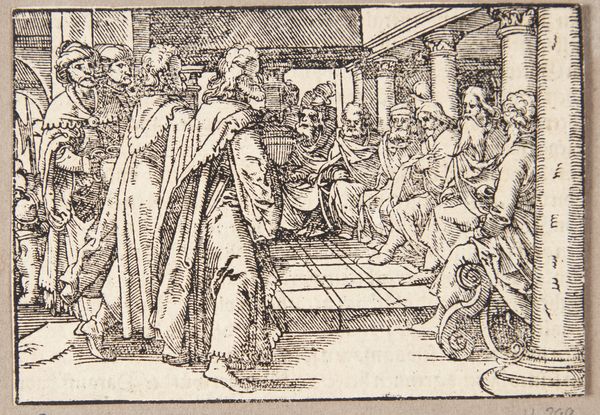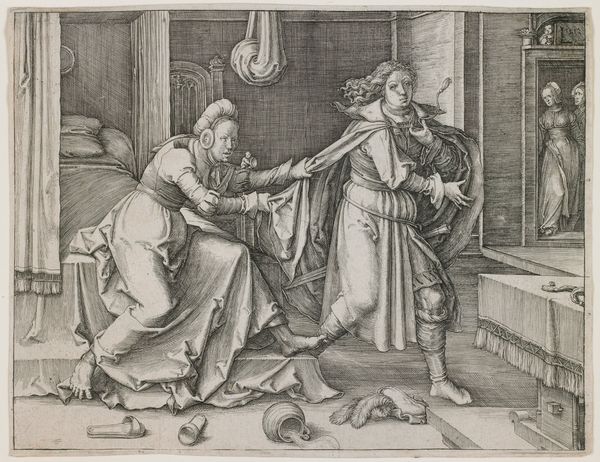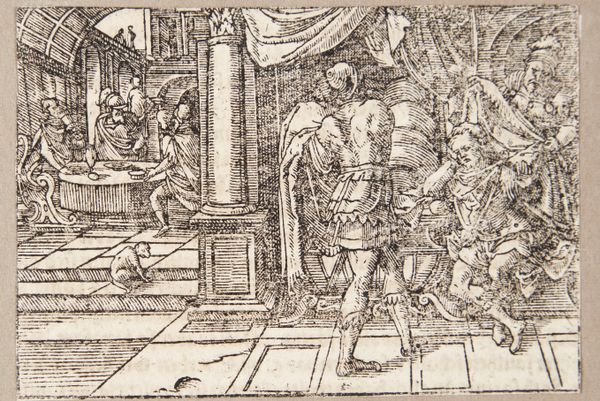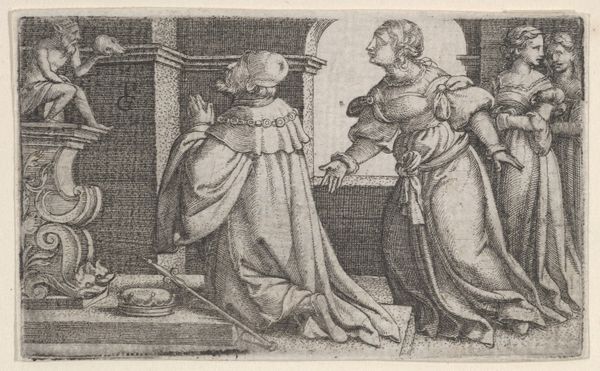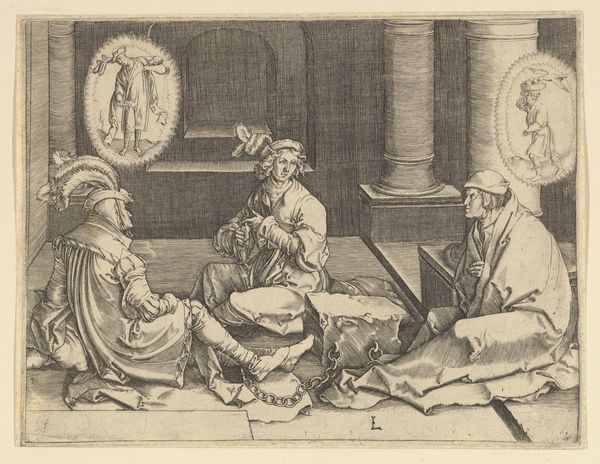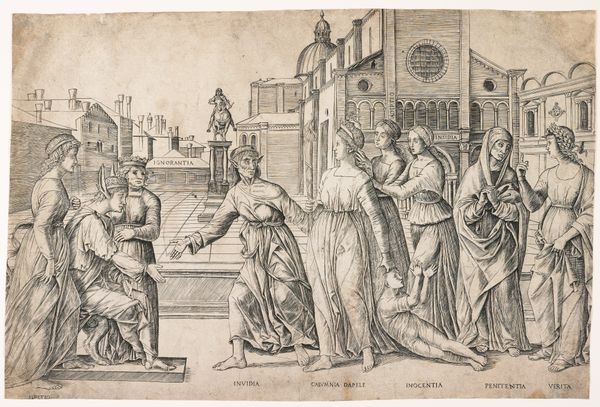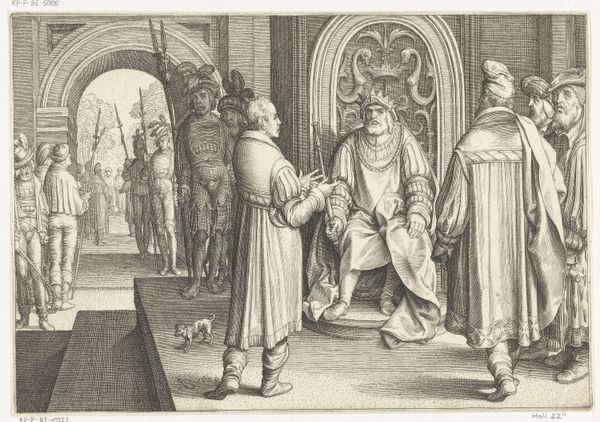
painting, watercolor
#
portrait
#
water colours
#
painting
#
oil painting
#
watercolor
#
group-portraits
#
genre-painting
#
italian-renaissance
#
mixed media
#
rococo
Copyright: Public domain
Editor: So this is Giovanni Domenico Tiepolo's "The Textile Merchant," painted around 1757, a watercolor and oil painting. It’s striking how these figures are depicted in almost theatrical costumes; it’s like looking at a stage production. What kind of story do you think Tiepolo is trying to tell us here? Curator: The "Chinese Room" was designed at a period where 'chinoiserie' was very popular. What’s fascinating is the Western interpretation and presentation of "Eastern" themes, like commerce, and luxury, presented in the artwork. This idealized vision served very specific social and political purposes. How does the composition strike you, in terms of its potential public reception back then? Editor: Well, the placement of the figures, especially the merchant presenting the fabric, feels like a deliberate display. The clothing, the textiles, all suggest wealth. Curator: Exactly. These depictions acted as status symbols, visually reinforcing the power and prestige associated with the upper class who commissioned such works. Tiepolo utilizes this genre painting not just as art, but to solidify social standing through conspicuous displays of material culture. It's a commentary on trade and wealth as it was consumed and displayed. What is your impression about how these symbols shaped cultural dialogues then? Editor: It’s interesting how these images helped reinforce a hierarchy. So, even the simple act of displaying fabrics becomes a form of asserting power? Curator: Precisely. It encouraged specific viewpoints and validates existing social frameworks. And remember, who has the money to buy paintings like this *and* the textiles depicted? This dynamic shaped much of the art produced at the time, so this image serves as propaganda. Editor: I hadn’t thought about it that way before! So much to think about when considering the social impact, the target audience, and political undertones when paintings were commissioned during the Italian Renaissance! Curator: Absolutely! Examining these elements reveals how deeply intertwined art is with socio-political forces.
Comments
No comments
Be the first to comment and join the conversation on the ultimate creative platform.
